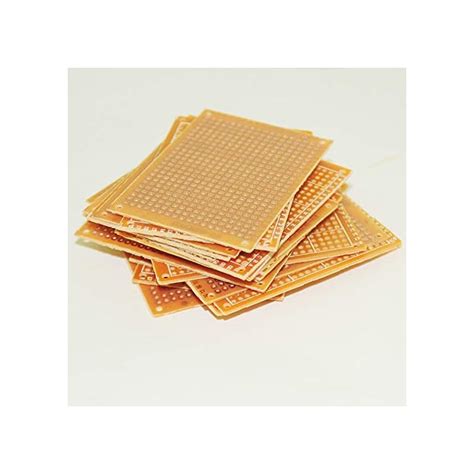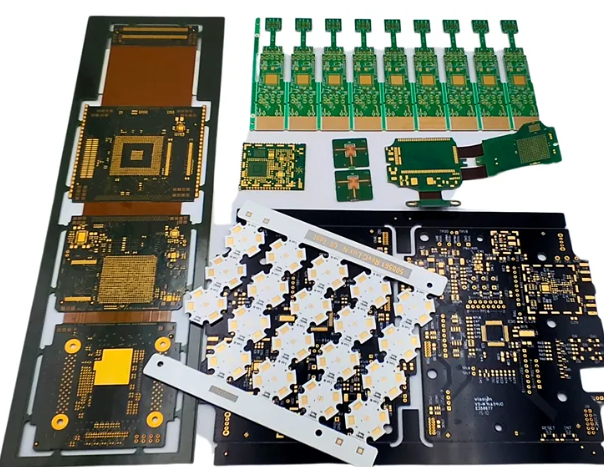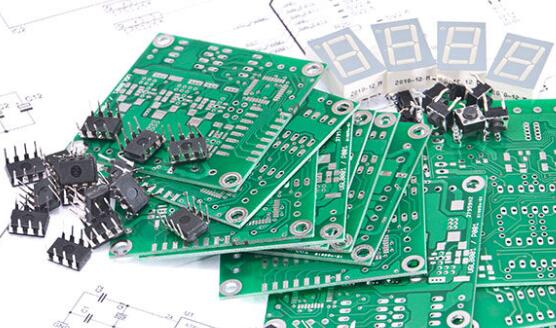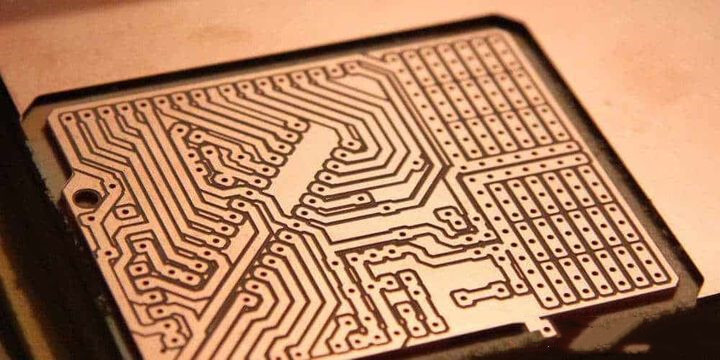Pcb prototype testing
Importance Of Pcb Prototype Testing In Product Development
In the realm of product development, the importance of PCB prototype testing cannot be overstated. Printed Circuit Boards (PCBs) serve as the backbone of modern electronic devices, providing the necessary pathways for electrical currents to flow between various components. As such, ensuring the reliability and functionality of these boards is paramount. PCB prototype testing plays a crucial role in this process, offering a myriad of benefits that contribute to the overall success of a product.
To begin with, PCB prototype testing allows engineers to identify and rectify design flaws at an early stage.
By creating a prototype, developers can simulate real-world conditions and observe how the PCB performs under various scenarios. This early detection of issues is invaluable, as it prevents costly revisions and delays later in the production cycle. Moreover, it enables engineers to make informed decisions about necessary modifications, thereby enhancing the overall design and functionality of the final product.
Furthermore, PCB prototype testing is instrumental in verifying the electrical performance of the board.
Through rigorous testing, engineers can assess parameters such as signal integrity, power distribution, and thermal management. These factors are critical in ensuring that the PCB can handle the demands of the intended application. For instance, poor signal integrity can lead to data corruption, while inadequate thermal management can cause overheating and component failure. By addressing these issues during the prototype phase, developers can ensure that the final product meets the required performance standards.
In addition to performance verification Electronic devices must adhere to specific guidelines to ensure safety, reliability, and interoperability. Prototypes allow developers to conduct tests that verify compliance with these standards, such as electromagnetic compatibility (EMC) and environmental stress tests. This not only ensures that the product is safe for use but also enhances its marketability by meeting regulatory requirements.

Moreover, PCB prototype testing provides valuable insights into the manufacturability of the design.
Prototyping allows developers to evaluate the feasibility of mass production and identify potential manufacturing challenges. For example, issues such as component placement, soldering quality, and assembly processes can be assessed and optimized during the prototype phase. This proactive approach minimizes the risk of production bottlenecks and ensures a smoother transition from prototype to full-scale manufacturing.
Another significant advantage of PCB prototype testing is the opportunity for iterative improvement.
Prototyping is not a one-time process; rather, it involves multiple iterations to refine the design. Each iteration provides feedback that informs subsequent modifications, leading to a progressively improved product. This iterative approach fosters innovation and allows developers to explore different design possibilities, ultimately resulting in a more robust and reliable final product.
In conclusion, PCB prototype testing is an indispensable aspect of product development. It enables early detection and correction of design flaws, verifies electrical performance, ensures compliance with industry standards, assesses manufacturability, and facilitates iterative improvement. By investing in thorough prototype testing, developers can mitigate risks, reduce costs, and enhance the overall quality and reliability of their products. As technology continues to advance, the role of PCB prototype testing will remain critical in driving innovation and ensuring the success of electronic devices in an increasingly competitive market.

Common Challenges In Pcb Prototype Testing And How To Overcome Them
PCB prototype testing is a critical phase in the development of electronic devices, ensuring that the design functions as intended before mass production. However, this process is fraught with challenges that can impede progress and affect the final product’s quality. Understanding these common challenges and knowing how to overcome them is essential for engineers and designers.
One of the primary challenges in PCB prototype testing is signal integrity issues.
These issues arise due to improper routing of high-speed signals, leading to signal degradation, crosstalk, and electromagnetic interference (EMI). To mitigate these problems, it is crucial to follow best practices in PCB layout design. This includes maintaining proper spacing between traces, using ground planes to reduce EMI, and employing differential pairs for high-speed signals. Additionally, simulation tools can be used to predict and address signal integrity issues before the physical prototype is created.
Another significant challenge is thermal management. As electronic components become more powerful, they generate more heat, which can affect the performance and longevity of the PCB. Effective thermal management involves selecting appropriate materials with good thermal conductivity, designing for adequate airflow, and incorporating heat sinks or thermal vias. Thermal simulation software can also be used to identify potential hotspots and optimize the design accordingly.
Component placement and soldering defects are also common issues encountered during PCB prototype testing.
Misaligned components, insufficient solder, or solder bridges can lead to short circuits or open circuits, rendering the PCB non-functional. To overcome these challenges, automated optical inspection (AOI) systems can be employed to detect placement and soldering defects early in the process. Additionally, using high-quality soldering equipment and adhering to industry standards can minimize the occurrence of these defects.
Power integrity is another critical aspect that can pose challenges during PCB prototype testing.
Inadequate power distribution can lead to voltage drops, noise, and instability in the circuit. To ensure robust power integrity, designers should use decoupling capacitors strategically placed near power pins, design wide power and ground traces, and implement power planes. Power integrity analysis tools can help identify and rectify potential issues in the power distribution network.
Testing and debugging the PCB prototype can be time-consuming and complex, especially when dealing with multi-layer boards and dense component placement.
Accessing test points and probing signals can be challenging, leading to incomplete or inaccurate testing. To address this, designers should incorporate test points and vias in the initial design phase, ensuring that critical signals are accessible for probing. Utilizing boundary scan testing and in-circuit testing (ICT) can also facilitate thorough testing and debugging.
Finally, documentation and communication gaps can hinder the PCB prototype testing process.
Incomplete or inaccurate documentation can lead to misunderstandings and errors during testing. To overcome this, maintaining detailed and up-to-date documentation throughout the design and testing phases is essential. Clear communication between design, testing, and manufacturing teams can ensure that any issues are promptly identified and addressed.
In conclusion, PCB prototype testing is a complex but essential process that requires careful attention to detail and adherence to best practices. By addressing common challenges such as signal integrity, thermal management, component placement, power integrity, testing accessibility, and documentation, engineers can ensure a successful prototype that paves the way for a reliable and high-quality final product. Employing advanced tools and fostering effective communication among teams can further enhance the efficiency and accuracy of the testing process.

Essential Tools And Techniques For Effective Pcb Prototype Testing
Effective PCB prototype testing is a critical phase in the development of electronic devices, ensuring that the final product functions as intended and meets all necessary specifications.
To achieve this, a combination of essential tools and techniques must be employed, each playing a pivotal role in identifying and rectifying potential issues. Understanding these tools and techniques is fundamental for engineers and technicians who aim to produce reliable and high-quality printed circuit boards.
One of the primary tools used in PCB prototype testing is the multimeter.
This versatile instrument measures voltage, current, and resistance, providing crucial insights into the electrical properties of the circuit. By using a multimeter, engineers can verify that the connections are correct and that there are no short circuits or open circuits. This initial step is vital for ensuring that the basic electrical integrity of the PCB is intact before proceeding to more advanced testing.
In addition to the multimeter, an oscilloscope is indispensable for observing the behavior of electrical signals within the circuit.
Oscilloscopes allow engineers to visualize waveforms and detect anomalies such as signal distortion, noise, or unexpected voltage levels. This tool is particularly useful for testing high-frequency circuits and ensuring that signal integrity is maintained throughout the PCB. By analyzing the waveforms, engineers can pinpoint issues that may not be apparent through static measurements alone.
Another essential tool in the PCB prototype testing arsenal is the logic analyzer.
This device is used to capture and analyze digital signals, making it invaluable for testing digital circuits and communication protocols. Logic analyzers can monitor multiple signals simultaneously, providing a comprehensive view of the circuit’s operation. This capability is crucial for debugging complex digital systems and ensuring that data is transmitted and received correctly.
Thermal imaging cameras also play a significant role in PCB prototype testing.
These cameras detect heat patterns on the PCB, allowing engineers to identify components that may be overheating or dissipating more power than expected. Overheating can lead to component failure and reduced reliability, so it is essential to address thermal issues early in the development process. By using thermal imaging, engineers can optimize the thermal management of the PCB and ensure that it operates within safe temperature limits.
In conjunction with these tools, several techniques are employed to enhance the effectiveness of PCB prototype testing.
One such technique is boundary scan testing, which leverages the IEEE 1149.1 standard to test the interconnections between integrated circuits. This method allows for thorough testing of complex PCBs without the need for physical test probes, reducing the risk of damaging the board and improving test coverage.
Another important technique is in-circuit testing (ICT), which involves using a bed of nails fixture to make contact with various test points on the PCB.
ICT can quickly identify manufacturing defects such as solder bridges, missing components, or incorrect component values. This technique is highly effective for mass production, as it provides rapid and automated testing of each PCB.
Functional testing is also a critical technique, where the PCB is tested under real-world operating conditions to ensure that it performs its intended functions.
This type of testing often involves custom test setups and software to simulate the final application environment. By performing functional testing, engineers can validate the overall performance and reliability of the PCB.
In conclusion, effective PCB prototype testing requires a combination of essential tools and techniques to ensure that the final product meets all design specifications and operates reliably. Multimeters, oscilloscopes, logic analyzers, and thermal imaging cameras provide valuable insights into the electrical and thermal behavior of the circuit. Techniques such as boundary scan testing, in-circuit testing, and functional testing further enhance the thoroughness and accuracy of the testing process. By employing these tools and techniques, engineers can identify and address potential issues early, leading to the successful development of high-quality electronic devices.
Best Practices For Ensuring Reliability In Pcb Prototype Testing
Ensuring reliability in PCB prototype testing is a critical step in the development of electronic devices. The process involves a series of meticulous practices designed to identify and rectify potential issues before mass production. By adhering to best practices, engineers can significantly enhance the performance and durability of the final product.
To begin with, thorough planning is essential.
Before embarking on the actual testing, it is crucial to define clear objectives and establish a comprehensive testing strategy. This involves understanding the specific requirements of the PCB, including its intended application, environmental conditions, and performance expectations. By setting precise goals, engineers can tailor their testing procedures to address the most critical aspects of the prototype.
Next, selecting the appropriate testing methods is paramount.
Various techniques, such as in-circuit testing (ICT), functional testing, and environmental stress testing, offer different insights into the PCB’s performance. In-circuit testing, for instance, allows for the examination of individual components and connections, ensuring that each part functions correctly. Functional testing, on the other hand, evaluates the PCB’s overall operation within its intended application, verifying that it meets the desired specifications. Environmental stress testing subjects the PCB to extreme conditions, such as temperature fluctuations and humidity, to assess its resilience and reliability.
Moreover, the use of advanced testing equipment can greatly enhance the accuracy and efficiency of the testing process.
High-quality oscilloscopes, multimeters, and automated test systems provide precise measurements and detailed data, enabling engineers to identify even the most subtle defects. Investing in state-of-the-art equipment not only improves the reliability of the testing results but also reduces the likelihood of overlooking critical issues.
Another best practice is to implement a robust documentation system.
Keeping detailed records of the testing procedures, results, and any modifications made to the prototype is essential for traceability and future reference. This documentation serves as a valuable resource for identifying recurring issues, understanding the impact of changes, and ensuring consistency throughout the testing process. Additionally, it facilitates communication among team members and stakeholders, promoting a collaborative approach to problem-solving.
Furthermore, iterative testing and refinement play a crucial role in ensuring reliability.
Rather than conducting a single round of testing, it is advisable to perform multiple iterations, each time making necessary adjustments based on the findings. This iterative approach allows for continuous improvement and helps to identify and address issues that may not be apparent in the initial stages. By refining the prototype through successive testing cycles, engineers can achieve a higher level of reliability and performance.
In addition to these technical practices, fostering a culture of quality and attention to detail is equally important.
Encouraging a mindset that prioritizes thoroughness and precision can significantly impact the overall reliability of the PCB prototype. This involves promoting rigorous testing standards, emphasizing the importance of accuracy, and instilling a sense of responsibility among team members. By cultivating a culture of excellence, organizations can ensure that every aspect of the testing process is conducted with the utmost care and diligence.
In conclusion, ensuring reliability in PCB prototype testing requires a combination of meticulous planning, appropriate testing methods, advanced equipment, robust documentation, iterative refinement, and a culture of quality. By adhering to these best practices, engineers can identify and rectify potential issues early in the development process, ultimately leading to the production of high-quality, reliable electronic devices.







